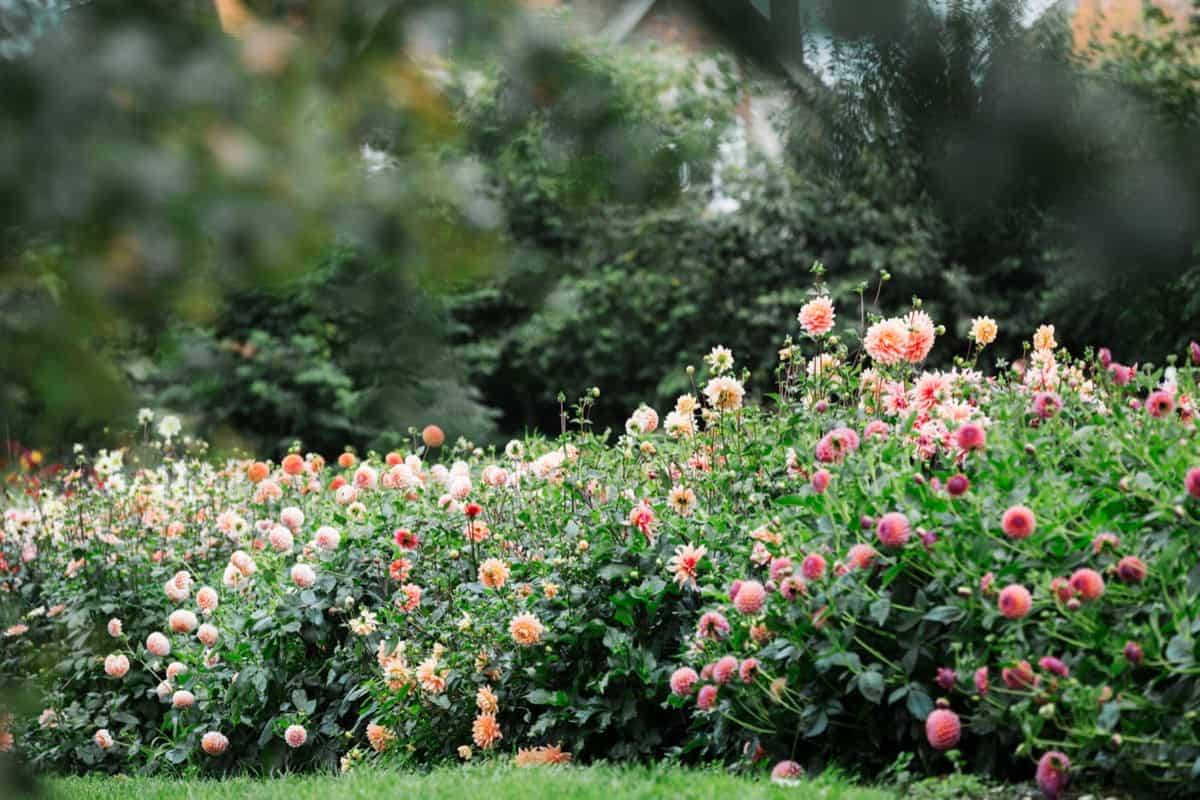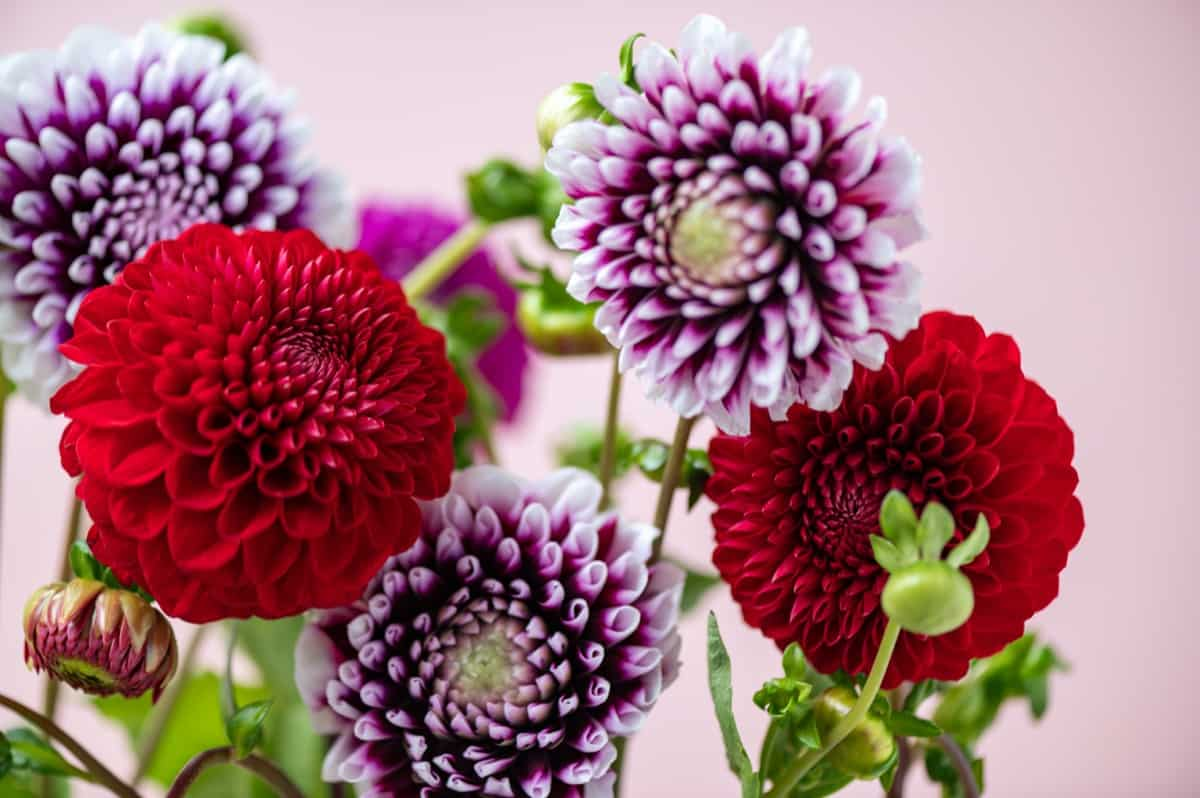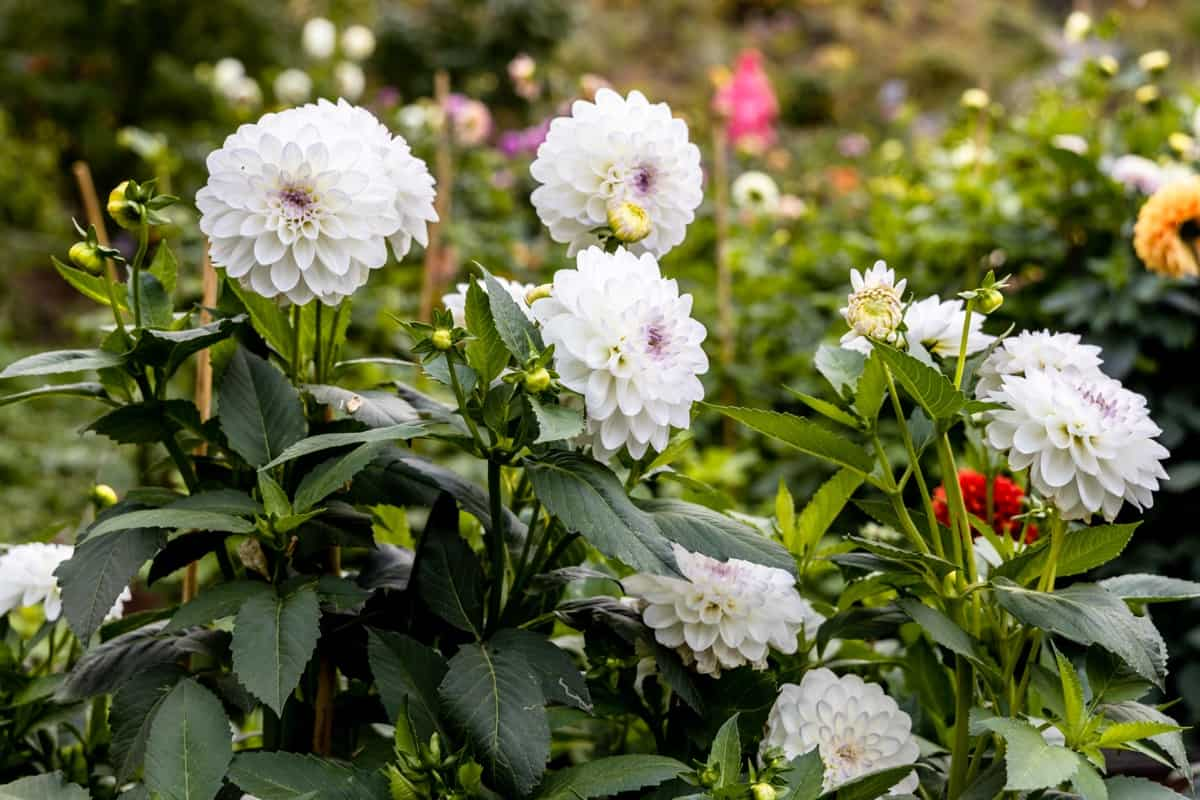Dahlias are beautiful and vibrant flowers that can bring joy to any garden or floral arrangement. However, it can be frustrating if your Dahlias aren’t blooming as expected. Understanding the reasons behind this issue and implementing the appropriate fixes, treatments, and solutions can help your Dahlias thrive and bloom to their full potential.

Why Your Dahlias Are Not Blooming?
Lack of Sunlight
One common reason Dahlias may not bloom is due to a lack of sunlight. These vibrant flowers thrive in full sunlight, typically needing at least six hours of direct sunlight each day. However, if your Dahlias are receiving enough sun exposure, they may need help to produce blooms. Insufficient sunlight can occur for various reasons. Perhaps your Dahlia bed is shaded by nearby trees or buildings. Or you may have placed the plants in an area blocked by other taller plants.
In some cases, even excessive cloud cover can hinder proper sun exposure. To address this issue, consider relocating your Dahlias to a sunnier spot in your garden where they can receive adequate light throughout the day. Pruning or removing any surrounding foliage or structures that cast shadows on the plants can also help maximize their sun exposure. Finding the right balance between sunshine and shade will contribute greatly to their health and blossoming potential.
Improper Watering
Watering plays a crucial role in the blooming of Dahlias. It’s important to provide them with just the right amount of water, neither too much nor too little. Improper watering can lead to stunted growth and a lack of blooms. One common mistake is overwatering. Dahlias like moist soil, but they don’t appreciate being constantly saturated.
On the other hand, underwatering can also hinder blooming. When Dahlias don’t receive enough water, their leaves may wilt, and their flowers may not fully develop. To ensure proper watering, check the moisture level of your Dahlia bed regularly. Remember that every garden is different, so adjust your watering schedule accordingly based on rainfall patterns and temperature fluctuations throughout the growing season.
In case you missed it: How to Grow and Care for Dahlias: Planting Instructions for Beginners

Nutrient Deficiencies
| Nutrient deficiency | symptom | Treatment |
| Nitrogen | If your Dahlias have pale or yellow leaves that are small in size, it could be a sign of nitrogen deficiency. | To address this issue, you can apply a nitrogen-rich fertilizer. |
| Phosphorus | Your Dahlias may need more phosphorus if they have weak stems and few flowers. | Adding bone meal to the soil can help boost this vital nutrient. |
| Potassium | Signs of potassium deficiency include brown leaf edges and stunted growth. | Applying potassium-rich fertilizers or adding wood ash to the soil can help replenish this essential nutrient. |
Pest and Disease Infestation
Pest and disease infestation is one of the major reasons why Dahlias may not bloom as expected. These beautiful flowers are, unfortunately, susceptible to a range of pests and diseases that can hinder their growth and development. One common pest that affects Dahlias is aphids. These tiny insects feed on the sap, causing stunted growth and distorted leaves. Another troublesome pest is the Dahlia bud mite, which attacks flower buds, preventing them from opening properly.
Dahlias are also prone to fungal diseases such as powdery mildew and gray mold. Powdery mildew appears as white powdery patches on the leaves, while gray mold causes rotting of stems and flowers. Inspecting your Dahlias regularly for signs of pests or diseases is important to combat these issues. If you spot any infestation or symptoms, use organic insecticides or fungicides specifically formulated for Dahlias.
Lack of Proper Pruning
Lack of proper pruning can also be a reason your Dahlias aren’t blooming as expected. Pruning is essential to maintaining these beautiful flowers’ health and vitality. When Dahlias are not pruned correctly, they can become overgrown and produce fewer blooms. It’s important to remove any dead or diseased foliage and any weak or crowded stems.
This allows for better air circulation and sunlight penetration, which is crucial for optimal growth. Additionally, pruning helps promote branching and encourages the development of more flower buds. Removing spent blossoms encourages the plant to redirect its energy toward producing new blooms instead of seed production.
To properly prune your Dahlias, cut back any dead or damaged stems to their base. Next, thin out crowded areas by selectively removing some ground-level stems. Pinch off spent flowers just above a set of healthy leaves. Remember that each Dahlia variety may have specific pruning requirements based on its growth habit and size. So, it’s always beneficial to research and understand the needs of your particular cultivar.
In case you missed it: How to Grow and Care for Rose Plants: Propagation and Planting Instructions for Best Blooms

Overcrowding
Overcrowding is a common issue that can prevent Dahlias from blooming to their full potential. When Dahlias are planted too close together, they compete for resources like sunlight, water, and nutrients. This can lead to stunted growth and fewer blooms. Giving your Dahlias enough space when planting them is important to avoid overcrowding. Follow the recommended spacing guidelines for the specific variety you are growing. This will allow each plant enough room to spread out and receive adequate airflow.
If you notice that your Dahlias are overcrowded, there is still time to fix the problem. Carefully dig up the plants and divide them into smaller clumps before replanting them with proper spacing. This will give each plant more room to grow and thrive. In addition to preventing overcrowding, dividing your Dahlia plants every few years also has other benefits. It helps rejuvenate the plants by promoting new growth and increasing flower production.
Improper Planting Depth
One common reason why Dahlias may not be blooming is due to improper planting depth. When planting Dahlias, getting the depth right is crucial for their growth and development. If the tubers are planted too shallow, they may need more stability in the soil, leading to strong stems and limited flower production.
On the other hand, planting too deep can hinder their ability to sprout and emerge from the ground. To ensure proper planting depth, dig a hole wide enough to accommodate the tuber without crowding its roots. Place the tuber in the hole with its eye facing up and cover it with soil until it is about 2-4 inches below ground level.
Extreme Temperatures
One of the reasons why your Dahlias may not be blooming is due to extreme temperatures. Dahlias are sensitive plants that thrive in moderate climates, so when the temperature swings from one extreme to another, it can hinder their growth and flowering. High temperatures can cause stress to your Dahlias, leading to wilting and drooping.
If you live in an area with scorching summers, providing shade during the hottest parts of the day can help protect your plants. This could be achieved by using shade cloth or strategically placing them near taller plants that provide some relief from direct sunlight. On the other hand, extremely cold temperatures can also pose a problem for Dahlias. Frost and freezing temperatures can damage their delicate foliage and flowers.
It’s important to take precautions by covering your plants with frost blankets or moving potted Dahlias indoors during frost warnings. Some may handle heat better, while others are more resilient against cold snaps. Therefore, selecting appropriate Dahlia varieties adapted to your specific climate ensures successful blooms.
In case you missed it: How to Grow and Care for Dahlias: Planting Instructions for Beginners

Variety Selection
Regarding Dahlias, the variety you choose can greatly impact their blooming success. With so many types available, selecting a variety that suits your growing conditions and preferences is important. Consider the size of the plant. Some varieties grow tall and require staking for support, while others stay more compact and don’t need as much assistance. Think about how much space you have in your garden and what kind of look you’re going for. Pay attention to the flowering time of each Dahlia variety. Some bloom earlier in the season, while others continue until late fall.
Conclusion
If your Dahlias aren’t blooming as expected, there are several reasons why this might be happening. It could be due to improper planting techniques, inadequate sunlight or water, pest infestation, or nutrient deficiencies in the soil. Remember that reviving non-blooming Dahlias requires patience and attention to detail regarding sunlight exposure, soil moisture levels, maintenance of nutrient balance through fertilizers application, pest control measures at the early detection stage timely removal of spent flowers through deadheading.
- Feed Your Flock for Less: Top 10 Tips to Save on Chicken Feed
- Ultimate Guide to Ossabaw Island Hog: Breeding, Raising, Diet, and Care
- Hatching Answers: The Top 10 Reasons Your Chickens Aren’t Laying Eggs
- Eggs and Economics: Breaking Down the Cost of Raising Backyard Chickens
- Defend Your Greens: Proven Methods to Keep Iguanas Out of Your Garden
- Ultimate Guide to Cinnamon Queen Chicken: A Comprehensive Guide for Beginners
- Ultimate Guide to California Tan Chicken: Breeding, Raising, Diet, Egg-Production and Care
- Ultimate Guide to Marsh Daisy Chicken: Breeding, Raising, Diet, and Care
- 10 Types of Chicken Farming Businesses You Can Start for Profits